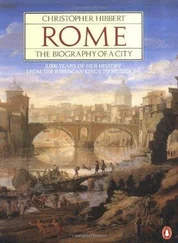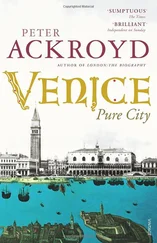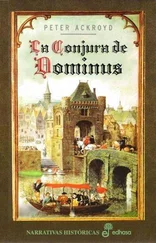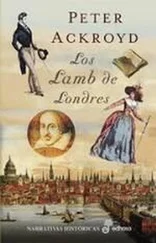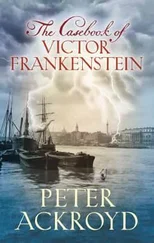Peter Ackroyd - London - The Biography
Здесь есть возможность читать онлайн «Peter Ackroyd - London - The Biography» весь текст электронной книги совершенно бесплатно (целиком полную версию без сокращений). В некоторых случаях можно слушать аудио, скачать через торрент в формате fb2 и присутствует краткое содержание. Год выпуска: 2000, ISBN: 2000, Жанр: Биографии и Мемуары, на английском языке. Описание произведения, (предисловие) а так же отзывы посетителей доступны на портале библиотеки ЛибКат.
- Название:London: The Biography
- Автор:
- Жанр:
- Год:2000
- ISBN:9781400075515
- Рейтинг книги:5 / 5. Голосов: 1
-
Избранное:Добавить в избранное
- Отзывы:
-
Ваша оценка:
- 100
- 1
- 2
- 3
- 4
- 5
London: The Biography: краткое содержание, описание и аннотация
Предлагаем к чтению аннотацию, описание, краткое содержание или предисловие (зависит от того, что написал сам автор книги «London: The Biography»). Если вы не нашли необходимую информацию о книге — напишите в комментариях, мы постараемся отыскать её.
London: The Biography — читать онлайн бесплатно полную книгу (весь текст) целиком
Ниже представлен текст книги, разбитый по страницам. Система сохранения места последней прочитанной страницы, позволяет с удобством читать онлайн бесплатно книгу «London: The Biography», без необходимости каждый раз заново искать на чём Вы остановились. Поставьте закладку, и сможете в любой момент перейти на страницу, на которой закончили чтение.
Интервал:
Закладка:
One custom was thoroughly absorbed. There was once a stone cross close by the church of St. Clement Danes, which marked a place of power and ritual. Here an open court assembled, and it was “at the Stone Cross” that manorial dues were paid; for one piece of land in the vicinity, payment was given in horseshoes and iron nails. It is sometimes believed that this is an obscure remembrance of a pagan rite, but it has also become a modern one. In the early twenty-first century there is still a ritual of presenting six horseshoes and sixty-one hobnails in the Court of Exchequer, within the Law Courts close to the site of the old cross itself, as part of rent due to the Crown.
So the Danes, and the Londoners , flourished during a period in which the historical narratives record only the actions of “the citizens of London” or “the army of London” as an independent and effectively self-governing community. When the pale-skinned and devout Edward (afterwards “the Confessor”) was anointed, the Anglo-Saxon Chronicle records that “all men chose him for king in London.” A legal statute in fact defined London “qui caput est regni et legum, semper curia domini regis” as the source of law and royal rule.
CHAPTER 3. Holy! Holy! Holy!
Edward the Confessor left a memorial more enduring than his family’s fortunes; he retired to a palace, and established a monastery, in Westminster.
There had been a church there since the second century, but London antiquarians have suggested that there was once a pagan shrine to Apollo on the same site. Certainly a Roman sarcophagus, and a section of floor mosaic, have been found in the immediate vicinity. It was an area of great importance, in any case, since Westminster-or more particularly Thorney Island upon which Parliament and the abbey now rest-marked the spot where the road from Dover was united with Watling Street which proceeded northward. At low tide it was possible to cross the river here, and to ride along the great Roman ways. Yet topography is not simply a matter of road alignments. Tothill Fields beside Westminster was part of a ritualised area of power and worship; a document of 785 describes it as “that terrible place which is known as Westminster,” “terrible,” in this context, meaning sacred or holy terror.
It is not inappropriate, therefore, that the founding of Westminster Abbey is enwrapped in dreams and visions. The night before the hallowing of the first Saxon church here, in the seventh century, St. Peter himself appeared to a fisherman and was ferried across the river from Lambeth; the venerable figure crossed the threshold of the new church and all at once it was illuminated by a light brighter than a thousand candles. So began the history of the church of St. Peter. Edward the Confessor was in turn granted a dream, or vision, which persuaded him to build a great abbey. It became the repository of sand from Mount Sinai and earth from Calvary, a beam from the holy manger of Jesus and pieces of his cross, blood from Christ’s side and milk from the Virgin Mary, a finger from St. Paul and hair from St. Peter. Almost a thousand years later, in this place, William Blake was granted a vision of monks chanting and proceeding down the central aisle. A century before the poet’s sighting, Edward the Confessor also reappeared: a chorister came upon the broken coffin of the venerable king and drew from it a skull. So the sainted king had turned into a death’s head. It is perhaps an appropriate story for an abbey which has become London’s city of the dead, where the generations of kings and leaders and poets lie in silent communion as a token of that great mystery where past and present are mingled together. It is the mystery, and history, of London.
West Smithfield, after the foundation of St. Bartholomew-the-Great in the early twelfth century, witnessed as many miracles as any similar plot in Rome or Jerusalem. Edward the Confessor, in a prophetic dream, was informed that Smithfield had already been chosen by God as a place for his worship; Edward journeyed there the next morning and foretold that the ground should be a witness to God. In the same period three men from Greece came on pilgrimage to London, for already it had the renown of a sacred city; they approached Smithfield and, falling prostrate upon the ground, prophesied that there would be constructed a temple which “shall reach from the rising of the sun to the going down thereof.”
“The Book of the Foundation” of that great church of St. Bartholomew, from which these words are taken, was written in the twelfth century; it has much material for contemplation, but it also contains evidence relating to the piety of London and of Londoners. The founder of the church, Rahere, was on a journey in Italy when in a dream he was taken up by a beast with four feet and two wings to a “high place” where St. Bartholomew appeared to him and addressed him: “I, by the will and command of all the High Trinity, and with the common favour and counsel of the court of heaven, have chosen a spot in the suburb of London at Smithfield.” Rahere was to erect there a tabernacle of the Lamb. So he journeyed to the city where, in conversation with “some barons of London,” it was explained that “the place divinely shown to him was contained within the king’s market, on which it was lawful neither for the princes themselves nor for the wardens of their own authority to encroach to any extent whatever.” So Rahere sought an audience of Henry I in order to explain his divine mission to the city; the king graciously gave Rahere title to the spot which was at that time “a very small cemetery.”
Rahere then “made himself a fool” in order to recruit assistants in the great work of building. He “won to himself bands of children and servants, and by their help he easily began to collect together stones.” These stones came from many parts of London, and in that sense the narrative of construction is a true representation of the fact that St. Bartholomew’s was a collective work and vision of the city; it became, in literal form, its microcosm.
So the church rose, and many priests gathered to live “under regular rule” with the founder as prior. Beginning with its first foundation, when “a light sent from heaven gleamed over the church and remained over it for the space of an hour,” there were so many miraculous events within its walls that the chronicler declares that he will mention only those which he himself has witnessed. Wolmer, a cripple who supported himself “on two little stools he dragged behind him,” was carried to St. Bartholomew’s in a basket and, falling before the altar, was healed. A “certain woman of the parish of St. John” had her “enfeebled” limbs cured, and Wymonde that was dumb began to speak. Many of these miracles occurred on the day of the Feast of St. Bartholomew, so there was a continual awareness of sacred time in the city as well as sacred place. Miraculous cures were also performed in the “hospital of the church,” now St. Bartholomew’s Hospital. So St. Bartholomew’s is a temple of the holy spirit which has endured for almost nine hundred years.
When some citizens of London were on a long voyage to “the remote ends of the world,” they were threatened with shipwreck; but they comforted each other with the words: “what do we with little faith fear who have the good Bartholomew, the accomplisher of so many great marvels, set nigh to us in London? … He will not hide the bowels of his mercy from his fellow citizens.” In the oratory of the church was “an altar hallowed to the honour of the most blessed and perpetual Virgin Mary”; here the Virgin appeared to one lay brother and declared: “I will receive their prayers and vows and will grant them mercy and blessing for ever.”
Читать дальшеИнтервал:
Закладка:
Похожие книги на «London: The Biography»
Представляем Вашему вниманию похожие книги на «London: The Biography» списком для выбора. Мы отобрали схожую по названию и смыслу литературу в надежде предоставить читателям больше вариантов отыскать новые, интересные, ещё непрочитанные произведения.
Обсуждение, отзывы о книге «London: The Biography» и просто собственные мнения читателей. Оставьте ваши комментарии, напишите, что Вы думаете о произведении, его смысле или главных героях. Укажите что конкретно понравилось, а что нет, и почему Вы так считаете.

